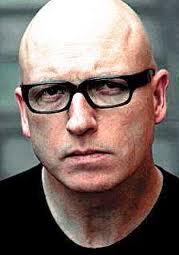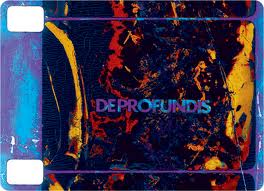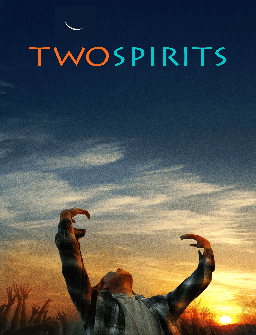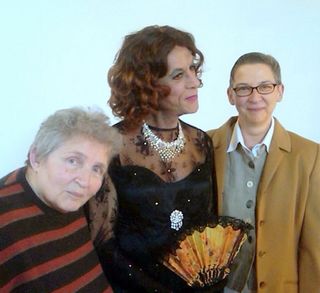Category Archives: Film
Maggie Gallagher Meets St. Peter
We Love Pina Coladas, Dolphins…and Neil Patrick Harris
LAWRENCE BROSE LEGAL DEFENSE FUND
 Lawrence
Lawrence
Brose is an experimental film artist and has created over thirty films since
1983. His films have been shown at international film festivals, museums, art
galleries, and cinematheques in the United States, Europe, Asia, Australia and
South America. Brose’s most recent film, De Profundis has been greeted with
critical acclaim and has been screened at more than eighty venues and festivals
worldwide since its release. De Profundis is a 65-minute experimental film
based on Oscar Wilde’s prison letter with an original score for the film by the
American composer Frederic Rzewski. In 1989 he began a series of film
collaborations with contemporary composers to explore the relationship between
the moving image and music.
The Issues
The issues here are fundamental: freedom of speech, freedom of
expression, and artistic freedom. The case is precedent-setting, and
will help determine whether anyone exercising their right to free speech
can be criminalized merely for their ideas—a fundamental violation of
the United States Constitution.
The case of Lawrence Brose is a prime example of the contemporary
abuse of power by Homeland Security and the Justice Department. The
charges brought against Brose essentially make engaging a difficult
issue a criminal offense and recall the government’s tactics during the
McCarthy trials of the 1950s. Like that infamous challenge to
Democracy, this case questions how far the government can reach,
unopposed, into artists’ studios, galleries, museums, and even our homes
to silence free speech, thought, and inquiry.
Case For Support
Lawrence Brose is not a criminal, he is an artist, doing what artists
do best: asking difficult questions about our life and times in order
to illuminate a new perspective as we struggle to move forward as a

culture. His experimental cinema has a distinguished track record of
engaging issues that affect the gay community, such as AIDS and
hostility from certain segments of the public. Facing problematical
subjects is precisely the job that people like Brose carry out in our
society – they explore unexamined dilemmas and present them for our
contemplation. It is truly tragic to see him attacked with the blunt,
and misguided legalistic weapon of pornography prosecution.
Lawrence Brose is working in a well-established tradition of image
appropriation, drawing specifically on images of masculinity in home
movies, old films, Gay erotica and documentaries. Brose collects found
still images, which he then processes and re-processes to find more
depth in the picture, producing complex layers of imagery that are
highly conceptual and offer a poignant commentary on normative
conventions of gender and sexuality. The final product is as abstract as
the paintings of Willem de Kooning, and a seizure of source material
entirely misrepresents the final outcome.
As experimental filmmakers Kenneth Anger and Andy Warhol before him,
Brose’s work pushes the envelope to create space for new expression.
For our society to remain open and vibrant, the answer is not to
criminalize that space for investigation, but rather to welcome it into
the marketplace of free ideas for examination.
The case against Lawrence Brose demonstrates an inappropriate
application of laws intended to protect children, and in the process
victimizes an experimental artist seeking to comment on societal woes.
The fact that he is under indictment for using images made by others to
examine the taboos that the laws are meant to prevent–is as
overreaching as it is troubling. It is so far from the intent of the
law, that it serves only to create a climate of fear. The result is
censorship and a chilling effect on the free expression of all artists
and all people. Censorship of this nature, and in all of its many forms,
occupies a realm of self-righteous presumption that abjures complexity
and results only in contradiction. It is very important that as
individuals living in a democratic society, we contribute to and speak
out openly in Brose’s defense, in essence defending our own lives and
our fundamental rights to think, work, and create freely.
This is the first time a case of this nature will be taken to trial.
It is important to note that Brose was not searching for the alleged
images nor is he accused of producing, distributing, buying or selling
pornography. This suit will be a protracted and expensive ordeal; one
that will have a profound impact on all artists. Your support is
greatly needed and much appreciated.
This website has been published by friends, colleagues and supporters
of Lawrence Brose, an artist and arts curator who has recently been
alleged to possess purportedly illicit digital images. One hundred of
the listed images are film frames from his highly acclaimed film De
Profundis, based on Oscar Wilde's prison writing. The purpose of the
website is to attest to Lawrence’s innocence, to provide a forum for
testimony on his behalf, and, importantly, to collect funds needed for
his legal defense.
We are in the process of collecting testimony from individuals, many
of whom are artists, academics and curators significant to the fields of
art and culture.
The Lawrence Brose Legal Defense Fund is a Class A Non-Profit
Corporation registered with the State of New York. Donations are not
tax deductible. To donate please send a check payable to "Lawrence Brose
Legal Defense Fund" and mail your check to PO BOX 501, Callicoon, NY
12723. Please see the Donate Now page for additional information. Or make a donation using Paypal.
Protégez-vous
https://youtube.com/watch?v=cILJI6cjU_0
Theater History
(left to right: Lola Pashalinski, Mario Montez, Linda Chapman)
theater scene from the early 1960s until the mid-1970s.
Presented by the NYU Tisch Department of Performance Studies
Mario Montez and Marc Siegel (he is a Berlin based archivist and found Mario in
Orlando Fl and invited him to the Berlin Film Festival when the Jack Smith documentary
was being shown in 2009…)
in conversation with Ela Troyano and Lola Pashalinski
Tuesday April 6th
7 to 8:30PM
Free.
34 Stuyvesant Street
The Barney Building
Einstein Auditorium
New York City
Seating is limited and is on a first come basis. Please arrive early.
This is a historical event .. two
authentic legends talking about the creation of underground theater ,,,off off
Broadway .. and the queerness of the Ridiculous Theater company etc.. Mario is
75 and Lola ageless so who knows when next they will be in the same place
chatting about history, He worked with Jack Smith and Warhol as well in Vain Victory, She was an original
Ridiculous Theater member and most recently played Gertrude Stein
Time For The Stick
Sex & The City. Indeed.
WC81 – Review of Lydia Nibley’s Two Spirits
 TWO SPIRITS
TWO SPIRITS
Directed by Lydia Nibley
Say Yes Quickly Productions
Running time: 64 minutes.
Reviewed by Bo Young
A
long time ago, in a universe far away, I sat with politico David
Mixner, after we had won the No On Six ballot initiative in California,
talking about “what comes next?” I’ve always been haunted by what he
said, “Someone has to die. Like Martin Luther King; movements need
martyrs”… because, less than two weeks later, Harvey Milk and George
Mosconi were killed in San Francisco. In many ways, Harvey’s story has
become larger than the life he led, and, sadly, this is often the case
with our martyrs. And too often it’s the case with films about GLBT
people. In the end, the GLBT person is usually dead. Alas, we don’t get
“happily ever after” very much.
Now comes the story of yet another
hate-filled murder of a teen-age Navajo boy…a Navajo nádleehí …Fred
Martinez, told to us by the filmmaking/writing team, and real world
husband and wife, Lydia and Russell Martin, asking the question “Why
are people killed for being who they are?” in the documentary, Two
Spirits. In doing so, they have elevated the life of Fred Martinez into
something greater.
Not that Fred hadn’t done a pretty good job in
his short life, on his own. Wonderfully self-aware, and born into the
Navajo culture, that, like many Native American cultures, recognized
the existence of more than two genders, Martinez’s expressions of his
nature were greeted by those close to him with warmth and
understanding, if not embraced, as an expression of the traditional
“nádleehí” or Two Spirit tradition. Coming out of an understandable
adolescent “dark night of the soul,” Martinez recovered to thrive and
was loved by most in his community. Until one night, when some thug
decided to “bug smash a fag.” It’s an ending with which we’ve become
all too familiar.
It is worth noting that Fred’s story, purely on
the basis of the facts of the murder, is almost identical to that of
another martyr that became larger in death, Matthew Shepard. But Fred
was dark-skinned, Native American and Matthew was blond-haired,
blue-eyed. Should we wonder, then, why more people know about Matthew
than Fred?
This documentary goes a long way toward remedying that
cultural lacuna. Elevating Fred’s story from more than another hate
crime tragedy in a small, dusty reservation, the film interweaves the
story of a mother’s loss of her son with a revealing look at the
largely unknown history of a time when the world wasn’t simply divided
into male and female and many Native cultures held places of honor for
people of integrated genders. Often confused as containing both male
and female, the two spirit, was called “nádleehí” in the Navajo language — tennewyppe in Shoshone, lhamana in Hopi, winkte
in Lakota, there were more than 500 nations with different languages —
was the “not-male, not-female” gender…something in between.
And
in the space in between the male sex and the female, as Two Spirits
examines beautifully, the nadleehi were considered the
culture-carrying, spiritually connected holy people of their community.
The many forms of this tradition have until recently been lumped by
historians under the rubric of “berdache,” being defined by Webster’s
Dictionary as a “homosexual male – an American Indian transvestite
assuming more or less permanently the dress, social status, and role of
a woman.”
Not surprisingly, the experience of Native
peoples, as is shown so vividly in this film, is something other than
either the popular or the professional stereotype. Though it would be
presumptuous to claim to represent its essence from the perspective of
outsiders, we can still look at certain features of two-spirit life in
Native cultures, features that delineate how First Nations peoples
integrated individuals with uncommon gender identity into their
society. And the irony is, we called them “savages.”
The first
step on the path to a two-spirit life was taken during childhood. The
Papago ritual is representative of this early integration: If parents
noticed that a son was disinterested in boyish play or “manly” work
they would set up a ceremony to determine which way the boy would be
brought up. They would make an enclosure of brush, and place in the
center both a man’s bow and a woman’s basket. The boy was told to go
inside the circle of brush and to bring something out, and as he
entered the brush would be set on fire. They watched what he took with
him as he ran out, and if it was the basketry materials they recognized
him as a berdache.
In recent times that pattern of acceptance has
been undermined, originally by the boarding school education forced
upon native children, and further by the influence of Christian
missionaries, and increasingly by the encroachment of television into
the psychic space of the tribe, with the result that two-spirit people
are more and more being viewed with suspicion by the less
traditionalist in their community. Yale anthropologist, Robert Stoller,
observed the “… deterioration in American Indians of techniques for
ritualizing cross-gender behavior. No longer is a place provided for
the role – more, the identity – of a male-woman, the dimensions of
which are fixed by customs, rules, tradeoffs and responsibilities. The
tribes have forgotten. Instead, this role appears as a ghost.”
But
Native two-spirit peoples are experiencing a re-awakening to the
validity, and to the cultural and spiritual roots, of their inner
calling. Many who, as a result of the cultural scorched-earth policies
of the Bureau of Indian Affairs (BIA), had sought escape from isolation
and rejection by adopting modern “gay” identities are now reconnecting
with their heritage by way of groups like the Native Gay and Lesbian
Gathering. They are re-interpreting their identity in terms dictated
neither by white culture nor by ancient customs, or perhaps by both.
The result is a mix peculiarly their own, which by breaking with both
traditional as well as modern forms remains true to the essence of the
two-spirit life. Fred Martinez embodied this modern form.
And he
died for it. The filmmakers pay proper respect to the horror of Fred’s
death. But they unpacked this story, and we should all be grateful they
did. There’s deeper value to be learned here. Fred’s memory is
well-served. We can only hope his mother finds some solace in his story
being told in this important, rich and loving manner.
Bo Young is White Crane’s publisher. He lives in Upstate New York.
For more White Crane, become a fan on Facebook and join us on Yahoogroups.
Subscribe today and keep the conversation going! Consider giving a gift subscription to
your friends who could use some wisdom! If there's an article listed
above that was not excerpted online, copies of this issue are available
for purchase. Contact us at editors@gaywisdom.org
Tom Ford on Becoming Post Human
 So, I just heard Teri Gross interview with Tom Ford about his new movie adaptation of Christopher Isherwood's story "A Single Man." Gross also asked for his opinion on the state of fashion. He made some comments about the current state of fashion and how we imagine the body these days. I went back to the audio to capture it. Fascinating comments:
So, I just heard Teri Gross interview with Tom Ford about his new movie adaptation of Christopher Isherwood's story "A Single Man." Gross also asked for his opinion on the state of fashion. He made some comments about the current state of fashion and how we imagine the body these days. I went back to the audio to capture it. Fascinating comments:
We are becoming post-human. Actually we are! We are actually starting to manipulate bodies, because we can, into a shape. We are becoming our own art. What happens for me is it desexualizes everything. You know you start to become more polished or more lacquered, like a beautiful car. Does anyone want to sleep with you? Does anyone want to touch you? Does anyone want to kiss you? Maybe not, because you're too scary! But, you're beautiful, you're glossy, you're shiny, but you're not human. Very interesting. It's fascinating culturally." Tom Ford in his interviewed by Teri Gross's Fresh Air
